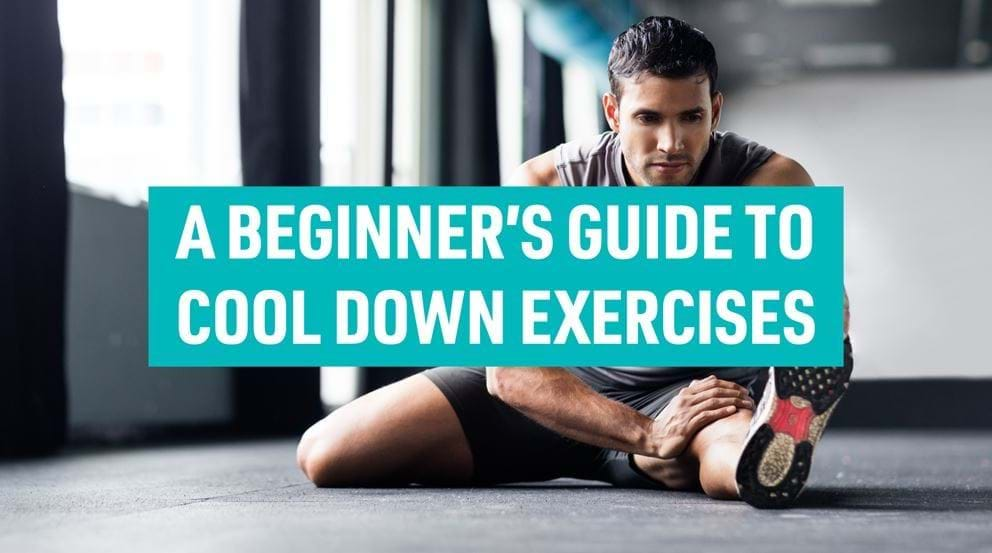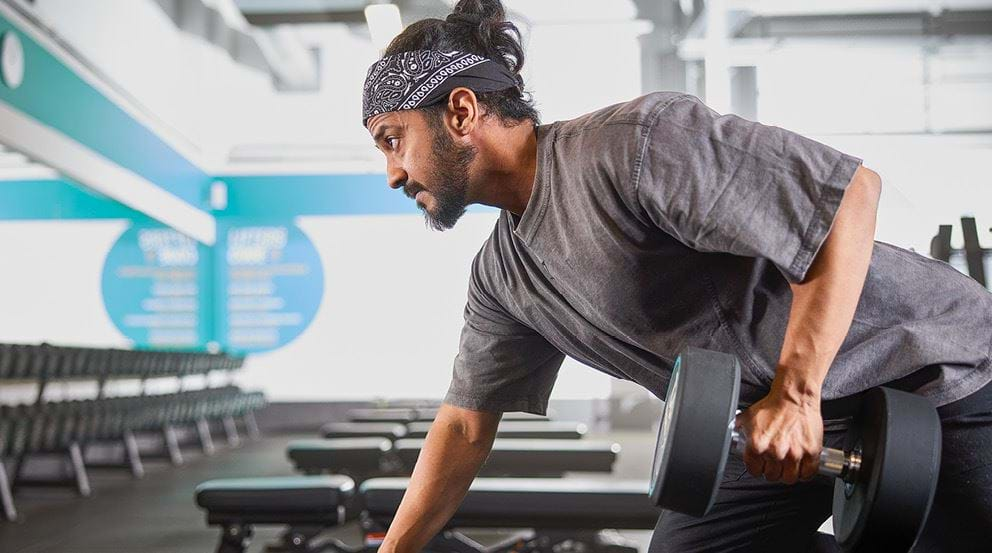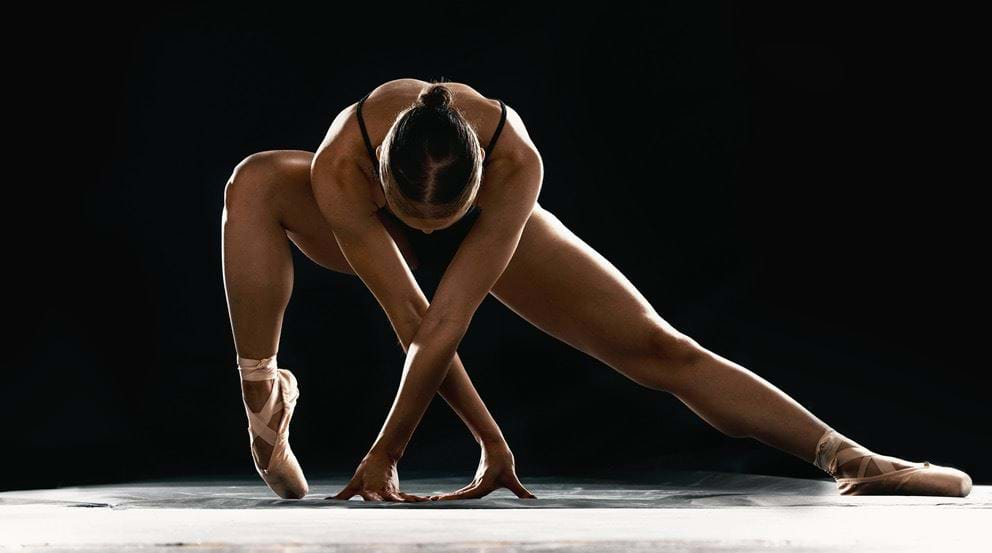The Beginner’s Guide To Cool Down Exercises

What Are Cooldown Exercises | Why Is Cooling Down Important | Which Workouts Need Cooldown | Is Walking A Cooldown Exercise | Static Stretching Vs Dynamic Stretching | Full Body Cooldown
Page last updated: 14th August 2023
Think your workout ends when you've done your last rep or completed your intended exercises? Think again! Cooling down after a workout is an important part of any workout, but one that is often forgotten about.
In this blog, PureGym Denton PT and General Manager Laura Melia explains why cooling down and post-workout stretches are so important, and shares some of the best cooldown exercises for beginners to try.
What Are Cooldown Exercises?
Exercising raises the heart rate, body temperature, and blood pressure, which need to be slowly returned to normal. Cooldown exercises are performed at the end of a workout to reduce intensity and bring your body back to its resting state. For example, after a run, you might taper the speed over 5-10 minutes until you are at a slow walk.
Stretches can also be performed as part of a cool down to deliver nutritients and remove lactic acid build up from the muscles that have been used. This can help to prevent muscle soreness and stiffness that occurs following micro-tears that our muscles can experience during a workout (commonly known as DOMS). Post-workout stretching can also help to boost overall flexibility by stretching the muscles while they are warm, which allows for a deeper stretch.
Why Is It Important To Cool Down After Exercise?
When you work out, your heart rate and blood pressure increase. This allows the body to pump blood (and oxygen) to the muscles fast enough. As we exercise, the movement helps to pump the blood back to the heart.
When you skip your cooldown and jump straight from a high intensity workout to a complete stop, the sudden drop in heart rate and lack of movement can cause the blood to pool in the muscles instead of returning to the heart and brain. This can shock the body and lead to dizziness or feeling faint. Cooling down prevents this from happening!
Exercising also causes micro-tears in the muscles, and it is the repair of these which leads to strength and muscle gains. Static stretching after a workout helps to reduce stiffness and soreness post-workout by removing any build-up of lactic acid and delivering nutrient rich blood to the muscles, which can help with the repair and recovery.
Do All Workouts Need A Cooldown?
You should aim to cool down after every workout, but the cooldown can vary depending on the intensity. For example, while cardio or HIIT workouts that significantly raise your heart rate will need a cooldown which tapers the intensity to allow the heart rate to lower gradually, a low intensity strength training session may not need this if your heart rate stayed at a moderate level.
On the other hand, strength training will likely need more post exercise stretching than cardio workouts as resistance training causes more muscle tears. For stretching, aim to stretch whichever muscle groups were worked out.
Is Walking A Cooldown Exercise?
Walking can be a great way to slowly bring your heart rate and body temperature back to normal and prevent the blood from pooling. Start off at a higher intensity and slowly lower the speed every 1-2 minutes, for a total of 3-5 minutes for a moderate workout, or 5-10 minutes for an intense workout. You should be able to breathe easily and talk once the cooldown is complete.
The cross trainer and cycling are good alternative options to reduce intensity too.
Static Stretching Vs Dynamic Stretching: Which Is Best For A Cool Down?
Static stretches are generally held in one place, typically for 15 to 60 seconds, allowing you to ease your body further into the stretch as your muscles relax and elongate.
Dynamic stretches focus on moving muscles and joints through a full range of motion, making them more active and helping to raise and improve blood flow, heart rate and body temperature.
As such, dynamic stretches are usually recommended for pre-workout warm ups, to help prepare your body for the exercise to come, and static stretches are best for cooling down, so you can gently ease your muscles out of a tense and contracted state as they return to their resting length.
Best Full Body Cool Down Exercises
A good cool down should target the muscle groups used in your workout and include:
- A gradual reduction in aerobic intensity (cardio)
- Static or PNF stretches
After a full body workout, the crosstrainer is a great way to reduce intensity as it moves the entire body. Following an intense workout, aim for 10 minutes on the crosstrainer, dropping the intensity every 2 minutes.
Follow this with a full body static stretching routine. These are some of the best beginner's cooldown stretches for a full body workout:
- Forward fold hamstring stretch -- 3 x 30 seconds
Stand with feet hip-width apart and, keeping your back straight, hinge at your hips as you lower your torso towards your legs. Reach for your shins, ankles or the floor, depending on your flexibility. You should feel the stretch in the back of your thighs. Repeat on each leg.
- Standing quadricep stretch -- 3 x 30 seconds
Stand upright and balance on one leg. Bend your other knee backwards so your leg is behind you, and grab your ankle with your hand. Gently pull your foot towards your glutes while keeping your knees close together and your hips pushed very slightly forwards. You should feel this stretch in the front of your thigh. Repeat on each leg.
- Low lunge hip flexor stretch -- 3 x 30 seconds
Start in a lunge position with one foot forward and other other extended back. Lower your back knee to the ground and sink your hips forward. You should feel the stretch in the front of the hip and thigh of the extended leg. Repeat on each leg.
- Child's pose -- 3 x 30 seconds
Beginning on your hands and knees, before sitting back onto your heels and extending your arms forward. Depending on which is more comfortable, you can keep your knees closer together or spread them apart in a V-shape. Lower your forehead to the mat and feel the stretch in your back, hips and shoulders.
- Wall assisted pectoral stretch -- 3 x 30 seconds
Stand facing a wall with your arms bent at a 90 degree angle at shoulder height and your forearms pressed against the wall. Gently turn your body away from the wall, feeling the stretch in your chest and shoulder. Repeat on each side.
- Cross-body shoulder stretch -- 3 x 30 seconds
Extend one arm across your chest at shoulder height and use your other hand to gently press your forearm towards your body. You should feel the stretch in your shoulder and upper back. Hold for 30 seconds and then switch sides. Repeat with each arm.
Doing three sets of 30 second stretches allows you to get deeper into the stretch each time, aiding flexibility. Deep breathing will also allow you to stretch further and return your breathing rate to normal. While stretching can feel uncomfortable, it should never cause pain.
We've shared more stretches for beginners here if you'd like to try additional stretches post-workout. Need inspiration for the main part of your workout? Try this full body workout with weights. You can also work with a Personal Trainer like Laura to reach your goals more efficiently.


